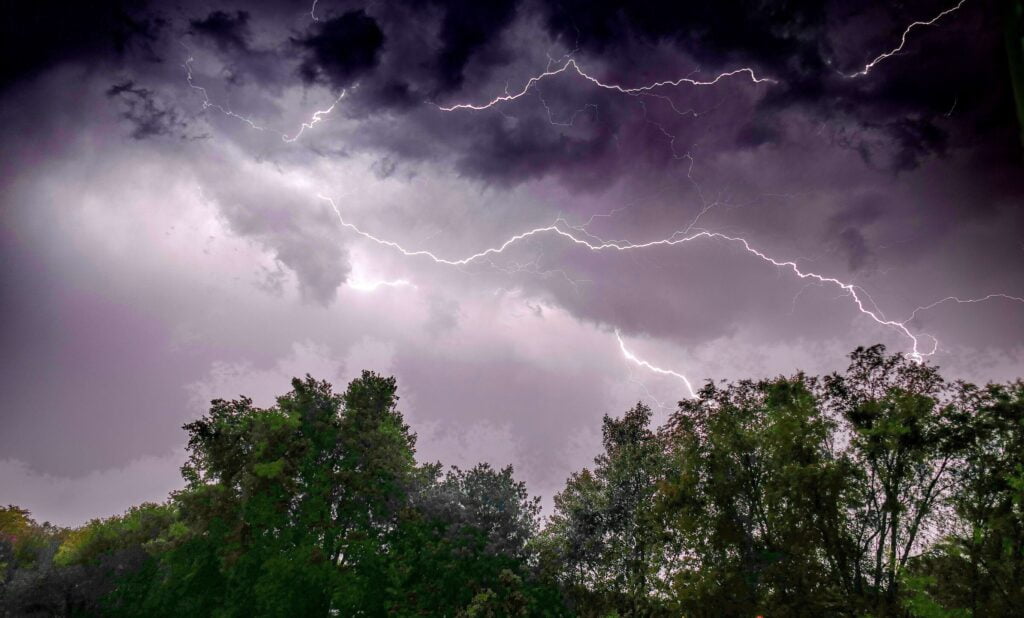Helping dogs cope with storm anxiety
Storm anxiety is a common issue faced by many dog owners. This article explores the reasons behind this anxiety and provides practical tips to help your beloved canine companion find comfort during turbulent weather.
Understanding storm anxiety
Storm anxiety in dogs, also known as astraphobia or thunderstorm phobia, is a genuine condition characterised by an intense fear of thunderstorms. Various factors, including the loud claps of thunder, bright lightning flashes, changes in atmospheric pressure, and the unpredictable nature of storms, can trigger this anxiety. Dogs with storm anxiety can exhibit a range of behaviours, from panting, trembling, and hiding to more severe reactions like destructive behaviour or attempting to escape.
Why do some dogs fear storms but not others?

- Sensitivity to noise: Dogs have more acute hearing than humans, and loud thunderclaps and lightning strikes can terrify them.
- Barometric pressure changes: Many dogs can sense changes in barometric pressure before a storm arrives, making them anxious.
- Negative associations: Some dogs may have had a traumatic experience during a storm, such as being left outside in bad weather, which can create lasting fear.
- Pheromones: Dogs can also detect changes in electrical activity and pheromones in the air, which may contribute to their unease.
Some dogs, just like some humans, are more sensitive to these changes and past experiences than others.
Helping your dog cope with storm anxiety

- Create a safe space: Designate a safe and quiet space in your home where your dog can retreat during a storm. Provide comfortable bedding, familiar toys, and dim lighting to create a calming environment.
- Distract and comfort: Engage your dog in activities they enjoy, such as play or gentle petting, to help divert their attention from the storm. Comforting words and a reassuring presence can also make a significant difference.
- Behaviour modification: Consider working with a professional dog trainer or behaviourist to address your dog’s anxiety through behaviour modification techniques. Desensitisation and counter-conditioning can be effective methods.
- Calming aids: Some dogs may benefit from natural calming aids like lavender diffusers, calming music like white noise, or anxiety-reducing pheromone diffusers. Consult with your vet for recommendations.
- Thundershirts: Thundershirts or anxiety wraps are specially designed to provide gentle, consistent pressure that can help calm anxious dogs during storms. For some dogs, these are incredibly effective.
- Medication: In severe cases of storm anxiety, your vet may prescribe medication to help alleviate your dog’s fear and anxiety. Medication should only be administered under the guidance of a qualified vet.
Preventive measures
As with everything in life, preparation in advance is key.
- Monitor the weather: Keep an eye on weather forecasts so you can be prepared and start implementing calming strategies before a storm.
- Stay calm: Your dog can pick up on your emotions. Remain calm and composed during a storm, as this can help reassure your pet.
Conclusion
Storm anxiety in dogs is a real and challenging issue, but with patience, understanding, and the right strategies, you can help your canine companion weather the storms with greater ease. Remember that each dog is unique, so it may take some trial and error to find the most effective approach for your pet. Ultimately, the goal is to provide a safe and comforting environment so your dog can find solace when their anxiety levels are high.


